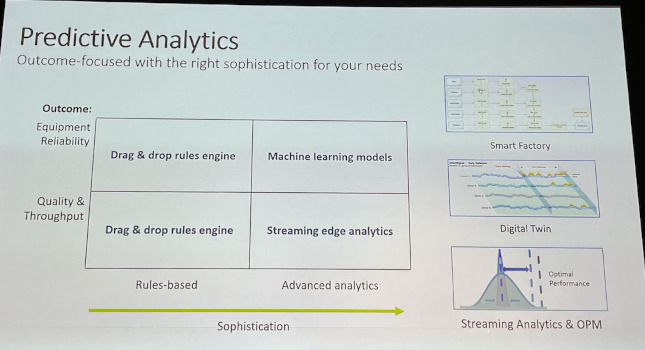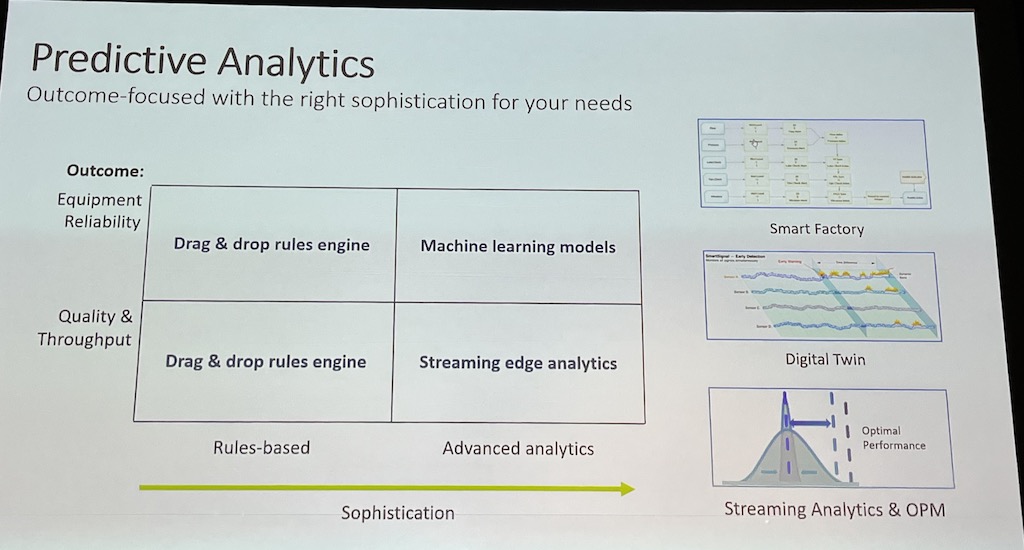Electric vehicle (EV) investments are increasing and automotive manufacturers are moving to meet this demand, but companies will need to effectively utilize digital transformation to help meet the growing demand.

Electric vehicle insights
- Global sustainability initiatives and shifts in consumer demand are driving the need for automotive manufacturers to transition from existing internal combustion engine (ICE) models to electric vehicles (EVs).
- While many companies are embracing EV manufacturing, challenges remain because of the complexity and scale across automotive manufacturers.
Electric vehicles (EVs) are growing in the marketplace and global automakers aren’t slowing down anytime soon, said Joe Gerstl, senior director of product management at GE Digital in his presentation “The Role Of Technology In The Transition From ICE To EV” at the Automotive Smart Manufacturing 4.0 USA Summit 2023 in Detroit. While internal combustion engines (ICEs) remain ubqitious, that is changing with EV Investments almost reaching a trillion dollars now, Gerstl said. This increased investment is partly due to companies and people are emphasizing sustainability and they’re willing to pay for it.
Not only that, Gerstl said, but countries also are tightening regulations on emissions. Europe is leading the charge, but the U.S. and China also have plans for zero emission vehicles (ZEVs) currently in force.
Meeting automotive manufacturing imperatives
While the transition toward EVs continues, getting automotive facilities to move there remains a challenge. Gerstl said automotive manufacturers have three imperatives: Cost, agility and quality. Each has a challenge that needs to be addressed while meeting bottom line expectations.
Reducing costs involves increasing or at least maintain margins. The response to this problem is increasing productivity and reducing waste and energy usage.
Being more agile expects companies to increase variety and their development cycles. Increasing digitization and automation while reducing launch costs.
Improving quality and customer satisfaction comes with the expectation companies will reduce manufacturing defects while being faster at the same time.
This is a tall order for many companies, which are facing challenges such as dealing with outdated information and systems and fragmented data that’s been siloed off. This makes access difficulty and reduces visibility, which undercuts the ability for companies to make better and more informed decisions.

“To respond effectively, you need the digital information to make the informed response,” Gerstl said.
Levers for improving cost, agility and quality, Gerstl said, are about finding hidden capacity, enable build to order and getting it right the first time. Each aspect can be enhanced through digital transformation and using advanced technology such as high-performance human-machine interfaces (HP-HMIs) into a single source rather than having it siloed like before.
“There’s a lot of data out there and systems today capture enormous amounts. The question is what do you do with it? The key is building a digital thread through the whole process,” he said.
Cloud-based solutions can help with storing the data and help accelerate the adoption of new systems. From there, users can capture massive data sets efficiently and apply predictive analytics to make better decisions.
Putting the data at scale and expand from a few tags to thousands and even millions can be done at scale and aggregated across the enterprise. This is a great deal of data to configure, which is why cloud storage is critical. Traditional operational technology (OT) cloud storage isn’t as effective, Gerstl said, and companies should considering using a cloud-based manufacturing execution system (MES) to enable integrated solutions as cloud services to help simplify adoption. They’re easier to use and provide more out of the box value and have lower upfront costs compared to a traditional MES.
While the challenges of improving agility, cost and quality for EV manufacturers and automotive companies is an issue, companies can achieve digital transformation by using the cloud to accelerate system adoption and apply predictive analytics with the massive amounts of data coming in.
Chris Vavra, web content manager, CFE Media and Technology, [email protected].


